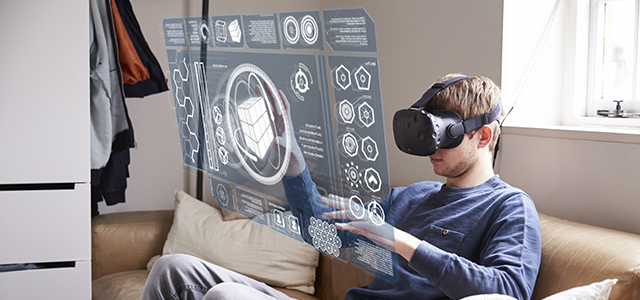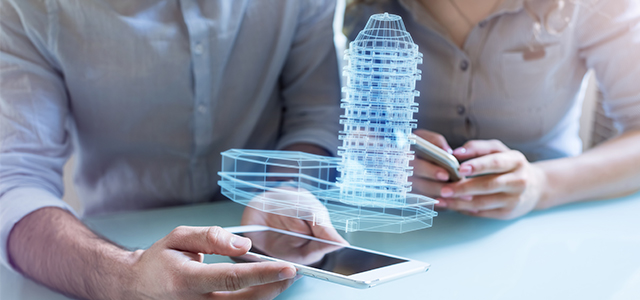Virtual Reality (VR) is an experience of an artificial environment which resembles the physical reality. It immerses the user by incorporating the human senses, using familiar surroundings and various objects which can be interacted with.
Virtual exploration and research in the fields of astronomy and aerospace started with NASA creating a virtual visual environment in the 1960s by pasting images of the surface of the moon from Surveyor 1 on large spherical shells. The onset of the usage of virtual reality for planetary research was in 1985 at the NASA AMES Research Center. CAVE (Cave Automatic Virtual Environment) system was created in the 1990s in which a 3D environment is projected onto the walls and floor of a room constructed from screens.
The user wears glasses and a location sensor so that the projection of the environment moves in respect to the user. ADVISER (Advanced Visualization in Solar System Exploration and Research) was a CAVE system developed with an objective to immerse the user to visualize and scientifically analyse Mars and further explore it. In 1993, NASA started to use VR to train astronauts for Extra-Vehicular Activities (EVA) which prepares them for space walks.
They are also trained to use a jet backpack called Simplified Aid for EVA Rescue (SAFER) which is used when an astronaut gets disconnected from the International Space Station (ISS). Real time VR is also used to carry out procedures using robonauts at the ISS while Mission ISS is a VR system which gives a virtual trip of the ISS. ANSIBLE (A Network of Social Interactions for Bilateral Life Enhancement) is a social communication system for astronauts at the ISS.
It uses Attention Restoration Theory (ART) which talks about how natural surroundings help to reduce stress levels and increase the focus of an individual by simulating natural environments. According to a study conducted by NASA’s Human Research Program comparing the crew members who used conventional asynchronous communication methods (i.e. email, recorded video and voice messages) and crew members who used ANSIBLE felt closer and satisfied with their family and friends. At present, there are limitations to use VR in space exploration such as time lag.
Despite these challenges, the experience of being in space can become more realistic with VR by extending its usage for unmanned spaceflights.
The article is been written by Achintya Chaudhary, an NMIMS School of Design student, under the mentorship of Dr. Shreya Maulik and Prof. Aswin.



